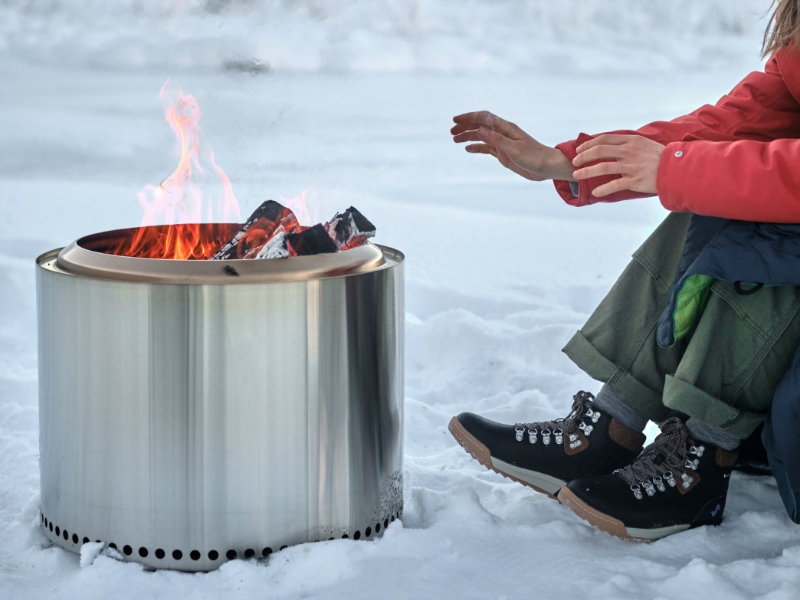
Get The Fire Burning
If you’ve ever tried to start a fire in the wilderness you know how difficult it can be, even under the best of conditions. Add in snow, freezing winds, and numb fingers, and it gets even more challenging. Even if you have a lighter, getting a good blaze going can be a challenge but following these simple steps will make it easier.
Pre-Planning
Before you leave home, bring something to start your fire. If you aren’t comfortable using a fire steel or another survival-type method, then pack some waterproof matches or a butane lighter. Cotton balls or make-up removal pads soaked in paraffin make great tinder. Stuff a few in a waterproof container and bring them along. Other home tinder ideas include old newspaper, dryer lint, and even Doritos. Yes, Doritos can be used as tinder and the leftovers make a nice snack too.
Pick Your Spot
When making a fire in the wild, first find the right location. Choose a place protected from the wind and snow and far enough away from anything that could catch fire like a tent, vehicle, trees, or bushes. Don’t build your fire under trees that are covered in snow that can melt and douse the fire. But if you are building your fire under a tree, make sure to knock the snow off the branches.
Make A Fire Pit
Find a flat area and brush the snow away from the site. If you can, find enough stones to make a stone floor in your fire pit. If not, build your fire on top of other logs. A fire feeds off of its embers so the base of the pit must be as dry as possible.

Find Your Tinder
Gather tinder from the area like dry twigs, forest lichen, or dry bark from a dead tree. Birch bark makes excellent tinder. You also need some larger pieces of wood or kindling. With the right tinder and dry kindling, you should have no problem getting a fire started.
Gathering Wood
It won’t be easy in the snow but finding the right wood will make or break your fire. And by the right wood we mean dry wood. Look for fallen trees. Their bark and branches are usually dry. Next, pick out wood from dead standing trees. To know if a tree is dead in the winter, look for ones with peeling or no bark, and those without any fine branches. Bark, dry wood, and pine cones, from conifer (evergreens) trees like pine, spruce, and Balsam, are great for starting a fire.
Avoid branches from a living tree unless the branch itself is dead. Find the low-growing branches that break off easily. Anything else is green and will take longer to light or won’t catch fire at all due to its high moisture content. Once the fire has started, use slower burning wood from deciduous trees (trees that drop their leaves) such as maple, oak, or elm to keep it going.
Building The Fire
There are numerous ways to build a good fire. One of the best is to stack kindling like a teepee with your tinder underneath. Around that, place larger logs in a square shape, while tossing smaller sticks into the fire until the whole thing is alight.
A second popular method is the log cabin. Here, put two logs parallel to each other, and stack two more on top perpendicular to them. Continue to stack logs like this until you have a cabin-like structure. Then place the tinder and kindling in the center square and light. This creates a fire that burns slower than the teepee.
For windy conditions build a lean-to fire which uses its own structure as a windbreak. To start, lay a thick log on the ground and place your tinder on the leeward side of the wind. Lean your kindling against the log, over the top of the tinder. Once lit, slowly add larger sticks, until there is enough fire going to add another full-size log.
Keep It Going
If you are hoping to enjoy the fire, and maybe a drink or two, late into the evening, you’ll need a lot of extra wood. One trick to keep your fire blazing is to surround it with any larger logs you haven’t used. The heat of the fire will dry them out and provide you with an extra stash to add to the fire as the night progresses.